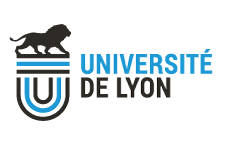WP1 - Thinking Language Complexity

Distribution statistique des voyelles d'un locuteur français dans un espace spectral bidimensionnel
Objectives
- Nurture a common culture between science of complexity and researches focusing on open issues in human communication
- Structure an international network of scholars involved in building a systemic and integrative approach to language(s) and interactions
- Foster research actions in line with WP2 and WP3, with a special focus on building conceptual articulations between various areas in language sciences and communication sciences (including educational situations), still unrelated.
Background
Modelling linguistic and interactional phenomena with complex adaptive systems (Steel, 1998; Nettle, 1999; Christiansen & Kirby, 2003) or mathematical frameworks (Ferrer i Cancho & Solé, 2001; Moscoso del Prado et al., 2004; Moscoso del Prado, 2012; Pellegrino et al., 2011) has attracted a variety of scholars during the last 15 years.
However, these attempts sometimes present i) a lack of understanding by the researchers in linguistics and communication of the possibilities and limitations of modelling, ii) generic and too abstract features in the models, which cannot address empirical phenomena researchers in linguistics and communication are more familiar with and iii) the intrinsic complexity of the issues at hand.
However, these attempts sometimes present i) a lack of understanding by the researchers in linguistics and communication of the possibilities and limitations of modelling, ii) generic and too abstract features in the models, which cannot address empirical phenomena researchers in linguistics and communication are more familiar with and iii) the intrinsic complexity of the issues at hand.
Description of work
- Development of frameworks and models of language and communication situations complexity
- Regular organization of seminars gathering scientists from varied backgrounds: humanities and social sciences, life sciences and complexity sciences
- Organization of a yearly workshop in collaboration with other institutes (primarily IXXI, but also the CNRL - Lyon Neuroscience Research Center, the Collegium de Lyon, etc.)
Criteria of achievement
- Production of original studies where elaborated models meet real, or at least realistic, linguistic situations (possibly exploiting databases or corpora of language data)
- Characterization of the human language and interaction as a complex adaptive system
- Definition of linguistic complexity and of communication situations complexity in a way that helps to achieve and integrate the goals of WP2 and WP3
Some recent works
Moscoso del Prado, F. (in press) The universal 'shape' of human languages: spectral analysis beyond speech. PLoS One
Moscoso del Prado, F. (2011) Causality, criticality, and reading words: Distinct sources of fractal scaling in behavioral sequences. Cognitive Science 35, 785-837
Moscoso del Prado, F. (2011) Macroscopic thermodynamics of human reaction times. Journal of Mathematical Psychology 55, 302-319
Pellegrino, F., Coupé, C. & Marsico, E. (2011) A cross-language perspective on speech information rate. Language 87:3, 539-558
Moscoso del Prado, F. (2011) Causality, criticality, and reading words: Distinct sources of fractal scaling in behavioral sequences. Cognitive Science 35, 785-837
Moscoso del Prado, F. (2011) Macroscopic thermodynamics of human reaction times. Journal of Mathematical Psychology 55, 302-319
Pellegrino, F., Coupé, C. & Marsico, E. (2011) A cross-language perspective on speech information rate. Language 87:3, 539-558



 Accueil
Accueil Nous contacter
Nous contacter WebAdmin
WebAdmin